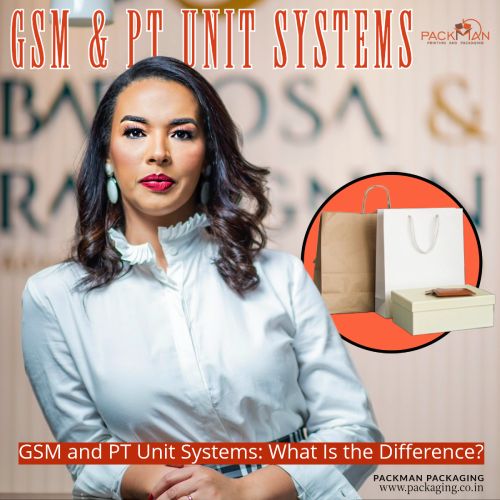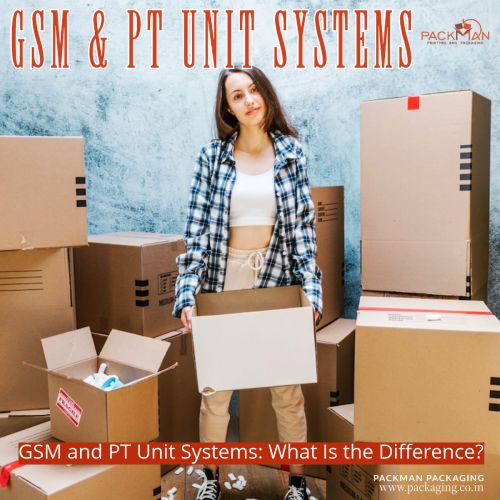In the world of measurement and quantification, various unit systems are employed to express physical properties and values accurately. Two commonly encountered unit systems are the GSM (Grams per Square Meter) system and the PT (Point) system. These unit systems serve distinct purposes and are used in different industries. In this article, from Packman Packaging, India’s top wholesaler and supplier of corrugated boxes we will explore the differences between GSM and PT unit systems.
What is the GSM (Grams per Square Meter) System?
The GSM system, which stands for “Grams per Square Meter,” is primarily used to measure the mass or weight of paper, textiles, and other thin materials. It is widely employed in the paper and textile industries to determine the thickness and quality of materials. In this system, the weight of a one-square-meter sheet of the material is expressed in grams.
Key points about the GSM system:
- Measurement: GSM measures the mass of a material per unit area. It quantifies how much one square meter of the material weighs in grams.
- Applications: GSM is commonly used to specify the weight and thickness of paper, cardboard, fabric, and similar materials. It helps in determining the suitability of materials for various applications, such as printing, packaging, and clothing.
- Higher GSM Values: A higher GSM value indicates a denser and thicker material. For example, a sheet of paper with a GSM of 100 is thicker and heavier than a sheet with a GSM of 80.
What is PT (Point) System?
The PT system, short for “Point,” is primarily used in the printing and typography industry to measure the size of fonts, typefaces, and other design elements. It quantifies the height of characters and the spacing between lines in a printed document. In this system, one point is equal to 1/72 of an inch.
Key points about the PT system:
- Measurement: PT measures the size of typefaces and fonts in printed materials. One point is equivalent to 1/72 of an inch, making it a precise unit for typography.
- Applications: PT is exclusively used in the design and printing industry to specify font sizes, line spacing, and other layout elements in printed documents, including books, magazines, and advertisements.
- Higher PT Values: In typography, higher PT values represent larger characters and greater line spacing. For example, a 12-point font is larger than a 10-point font.
Distinguishing the Difference
The primary difference between GSM and PT unit systems lies in their applications and the properties they measure:
- GSM is used to measure the weight or mass of thin materials per square meter and is prevalent in the paper and textile industries.
- PT measures the size of fonts, typefaces, and design elements in printed materials and is exclusively used in the printing and design industry.
In a nutshell, while both GSM and PT unit systems are vital for their respective industries, they serve entirely different purposes. GSM quantifies the weight and thickness of materials, while PT measures the size of printed characters and design elements. Understanding these distinctions is crucial for professionals in these fields to ensure accurate measurements and specifications in their work.





